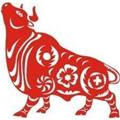25 Sambas
Grupos Tradicionais
1998
Tracks:
01. Grupo Fundo De Quintal - Emilia
02. Titulares Do Ritmo - Maria, Carnaval e Cinzas
03. Conjunto A Voz Do Morro - A voz do Morro
04. Grupo Reunâu E Bacanas - O Ouro e a Madeira
05. Grupo Fundo De Quintal - Enredo do meu sangue
06. Talismà - Trem das Onze
07. Grupo Reunâu E Bacanas - Bigorrilho
08. Velha Guarda Da Portela - Quantas Lagrimas
09. Talismà - Samba do Arnesto
10. Trio Mocotó - Maior e Deus
11. Grupo Reunâu E Bacanas - Na beira do Mangue
12. Grupo Fundo De Quintal - A flor e o Samba
13. Os Originais Do Samba - Escravo da Paixao ♥
14. Grupo Reunâu E Bacanas - Foi un rio que passou em minha vida
15. Un Toque A Mais - Nas cores da paixao
1998
Tracks:
01. Grupo Fundo De Quintal - Emilia
02. Titulares Do Ritmo - Maria, Carnaval e Cinzas
03. Conjunto A Voz Do Morro - A voz do Morro
04. Grupo Reunâu E Bacanas - O Ouro e a Madeira
05. Grupo Fundo De Quintal - Enredo do meu sangue
06. Talismà - Trem das Onze
07. Grupo Reunâu E Bacanas - Bigorrilho
08. Velha Guarda Da Portela - Quantas Lagrimas
09. Talismà - Samba do Arnesto
10. Trio Mocotó - Maior e Deus
11. Grupo Reunâu E Bacanas - Na beira do Mangue
12. Grupo Fundo De Quintal - A flor e o Samba
13. Os Originais Do Samba - Escravo da Paixao ♥
14. Grupo Reunâu E Bacanas - Foi un rio que passou em minha vida
15. Un Toque A Mais - Nas cores da paixao
♫☆`*♥¸¸.•*¨*•♫☆`*♥¸¸.•*¨*•☆♫
.ღ•:*´♥`*:•ღ.
♫☆`*♥¸¸.•*¨*•☆♫`*♥¸¸.•*¨*•☆♫
.ღ•:*´♥`*:•ღ.
♫☆`*♥¸¸.•*¨*•☆♫`*♥¸¸.•*¨*•☆♫
Samba Music History: Sensuality Touch Yet Energetic Feels
The history of samba music dates back to the early 1920’s. With a sensuality touch yet energetic, Samba dance and music has acquired many fans worldwide over the years. As the music culture has always been, samba music spread very fast after its emergence. The music was introduced in the United States in the second half of nineteen twenty when the energetic and superb beats caught everybody’s attention.
The samba dance is watched by people from all corners of the world
and many sway to this dance and music particularly in beautiful and
colorful Brazil carnivals. Those who actually shake a leg in the Samba
fashion acknowledge the dance’s beauty and pulsating music. All lovers
of Samba should read on the history of Samba music to learn more about
the origin of this pulsating dance.
There are various point of view in the Samba Music History. Samba originated in Africa although there is a belief that it emerged from an African American couple dance. A considerable level of speculation exists regarding this style’s origin with experts claiming it evolved from a different style referred to as Choro. Dancing and singing accompanies any music in a characteristic Samba performance.
There are various point of view in the Samba Music History. Samba originated in Africa although there is a belief that it emerged from an African American couple dance. A considerable level of speculation exists regarding this style’s origin with experts claiming it evolved from a different style referred to as Choro. Dancing and singing accompanies any music in a characteristic Samba performance.
Samba is a term derived from the ‘Semba’ Portuguese word but to the
natives of Africa America, the term has many interpretations. While it
meant praying for some, it was used in reference to a woman in Brazil.
This word’s original documented reference is traceable to an 1838
newspaper where the word’s meaning was offered as being dance and
rhythm.

The
recognition of Samba being a unique genre occurred in the twentieth
century particularly in Rio de Janeiro contributing immensely to the
history of samba music. During this period, slaves were introduced into
Rio de Janeiro and by then, other people did not find native dances
appropriate. Authorities embarked on controlling the widespread
popularity of this style’s dance and music, but numerous modifications
continued. From group dances, it evolved into partner dances and by the
1960s, most musicians adopted the dance and proceeded to popularize the
typical music of Samba. By the seventies, samba music gained a powerful
foothold over people’s minds via the radio, but by the early eighties,
it faded with the advent of other popular Brazilian music particularly
disco and rock music. In the history of Samba, when musical instruments
including the tan tan and banjo were invented, the musical style of
Samba was shortly revived before its fusion with various other styles of
music such as reggae and rap.
‘Pagode’ is yet another musical style with an origin in Samba. There
are numerous well-known musicians who left a mark in composing music of
this kind in the past. This saw many different styles emerging and a
good example of such a style is Bossa Nova which comprises of a heavy
Samba influence. Despite Samba’s musical style being quite popular
universally, it is not entirely acceptable in Brazil. A few
personalities feel that the Samba style in regard to dancing and music
is intended for society’s lower strata. The history of samba has
undergone a revolution over years and it is still loved by many
musicians and dancers.
♥


































































+Front.jpg)

















